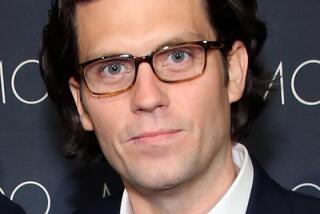Fairfax Shedding Magazines to Smooth Privatization : Managers Making Bid for Ms., Sassy
- Share via
NEW YORK — Managers at Fairfax Publications (U.S.) Ltd. said Thursday that they are negotiating to buy Ms. and Sassy magazines from the company’s Australian parent.
John Fairfax Ltd. of Sydney, which acquired Ms. in September and launched Sassy five months later, officially put the magazines on the block Wednesday. It was not known who else might bid for the properties.
Sandra Yates, president of Fairfax U.S., said she and Vice President Anne Summers began discussing a management-led buyout with executives in Australia last December. Yates said a bid is on the table, although she declined to reveal any figures.
Yates labeled as “optimistic” rumors that the Australian company paid as much as $15 million for Ms., which was founded by Gloria Steinem and Pat Carbine 16 years ago.
In an interview last month, Yates acknowledged that start-up costs for Sassy, a monthly magazine aimed at teen-age American girls, totaled $10 million.
The decision to sell the magazines is part of a wider sale of assets to help finance the privatization of John Fairfax Ltd.
Warwick Fairfax, 26, who took his father’s company private last December, “had to borrow significant funds to buy out shareholders and has a large debt and needs to liquidate assets,” Yates explained.
Fairfax has announced other belt-tightening measures at company holdings in both Australia and London.
Ms. circulation is holding steady at about 484,000 copies a month, Yates said. Sassy was expected to have an initial circulation of 250,000 and a goal of 1 million within five years. Because only two issues of Sassy have been published, it is too early to assess its circulation.
Yates said both the acquisition of the badly undercapitalized Ms. and the launching of Sassy by Fairfax were her idea. “So obviously I’ve always been very firmly convinced they could work.”
Still, both magazines will require “a substantial amount of investment over the next couple of years--many millions of dollars before they come into profit, because one is a turnaround and the other is a start-up,” Yates said.
She said she did not think finding investors would be a problem.
More to Read
The biggest entertainment stories
Get our big stories about Hollywood, film, television, music, arts, culture and more right in your inbox as soon as they publish.
You may occasionally receive promotional content from the Los Angeles Times.









